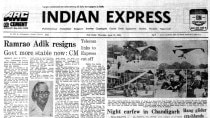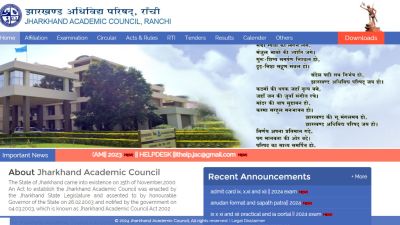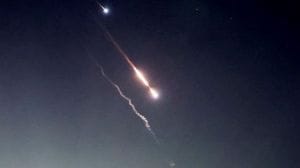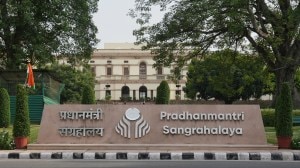- India
- International
What’s wrong with the Jallianwala Bagh restorations
Kishwar Desai writes: Those who died there should be remembered within a space which is historically correct in how it honours them
 The other problem is that by levelling the land in an effort to beautify, we are actually tampering with the bullet holes which are all around in the surrounding buildings and walls. (Illustration: C R Sasikumar)
The other problem is that by levelling the land in an effort to beautify, we are actually tampering with the bullet holes which are all around in the surrounding buildings and walls. (Illustration: C R Sasikumar)Honourable Prime Minister Narendra Modiji,
You may not remember me, but we first met in London alongside Prime Minister David Cameron at the newly-installed Mahatma Gandhi statue. The fact that Mahatma Gandhi was transformed by the Jallianwala Bagh massacre is the reason I am writing to you today.
First, as a proud Punjabi, I want to thank you for giving the Jallianwala Bagh massacre its proper place in our national history by commissioning a restoration of the historic site. It was long overdue. But I have to bring to your attention some of the “renovations” recently executed at Bagh. I have hope because you care about the representation of the massacre, and for history’s sake, that some of these renovations could be undone. But I also want to stress that this is not a politically motivated critique for us — it is connected only to honouring the memory of those who died for us at the Bagh.
To begin with, let me put a disclaimer: Along with some friends, I set up a trust to create a Partition Museum in Amritsar in 2017. This site had been visited by Arun Jaitley, who took a lot of interest in its development. Alongside, the trust ran a campaign for two years to get the Jallianwala Bagh museum renovated and the Bagh restored. We set up a Jallianwala Bagh Centenary Commemoration Committee — and collected material on Jallianwala Bagh with which we held exhibitions in India and abroad to raise awareness over what happened at the Bagh a century ago. We emphasised the importance of remembering the massacre because it was the flame which ignited our freedom struggle.
Thus, when you commissioned work on the restoration of the Bagh, two years ago, our trust gave all the research that we had collected to the agency tasked with the restoration of the historic site, and the renovation of the museums. Our hope was that at last the museum exhibition would be improved. The site had been neglected and had become a picnic place littered with packets of chips and scant respect for the memory of the martyrs.

We also hoped that now the Bagh would be made into a sombre site of remembrance and that it would be returned to its original look. One hundred years ago, it was bare, undulating land, parts of it five feet below the surrounding area, which is why General Dyer could mercilessly shoot the helpless revolutionaries gathered from the higher ground he stood on.
While I have not yet visited the recently “renovated” Bagh or the freshly designed museum, the first image someone has just sent to me is of the changes in the narrow brick-lined gali leading into the Bagh. This was the sole entrance and exit, 100 years ago. Now, after the renovation, the ground in this lane, in which the blood of the martyrs was mixed, is covered with shiny new tiles and the walls are decorated with sculptures of smiling men and women: None of this reflects the grim reality of that day in April a century ago.
Not only had the martyrs entered from here, but after the massacre, many of the bullet-ridden, bleeding men and boys had crawled out of this very gali onto the streets. Many died there itself.
This gali was one of the most crucial parts of the Bagh, and even if it may have been tampered with over the years, its rudimentary and simple structure was representative of the narrow lanes of Amritsar that General Dyer took advantage of.
The days before April 13 had been grim in Amritsar, in 1919. In fact, those attending the meeting were aware that they were walking into a dangerous zone as over the previous three days, starting from April 10, the British had massacred many in Amritsar. Funerals had been held all over the city, and entry and exit from the city were blocked.
Amritsar was already a city under curfew, so it would not have been a happy crowd full of smiling men and women converging for a Baisakhi Mela, as this mural depicts.
All the documents we researched showed that the martyrs had gathered to attend a political meeting on April 13, 1919. A majority of them belonged to Amritsar. At this meeting (unlike, again, what the mural depicts) women were unlikely to be present, due to the prevalent purdah system, and girl children were left at home. No eyewitness account mentions women at the Bagh.
When our trust spent around six months collating the body count, based on the original files from that period, we discovered that amongst the hundreds of men and boys who were killed, there were only two corpses of women, and no girl children.
Because of the available photographs, we know the seven-acre Bagh was barren in 1919. There was no vegetation and there was only one clump of trees, a well which did not have a surrounding wall and a small structure behind which people hid.
Therefore, creating another neat, well-manicured lawn to replace the old one is not a faithful restoration. In fact, in our vision for the restoration, we would remove the flowers and bushes — even the grass— so that we would be able to finally reveal the earth on which the martyrs had fallen. Just as the chambers in which the Nazis conducted their brutal experiments in Auschwitz have been left stark and solemn, this ground should also have been left bare and undecorated.
The other problem is that by levelling the land in an effort to beautify, we are actually tampering with the bullet holes which are all around in the surrounding buildings and walls. The single small structure, which was originally inside the Bagh, already has bullet holes which go below the present ground level, and so many of those bullet holes are barely visible. Had the creators of this new garden dug deeper and not levelled the ground, and not grown more vegetation, it is possible that more bullet holes could have revealed the extent of the carnage.
There are other similar issues in this renovation as well, which need redressal.
Honourable Prime Minister, we know your primary concern is that this massacre must be commemorated and that we must learn from the sacrifice of the martyrs, which is why I am hoping that by writing to you, the martyrs of Jallianwala Bagh may at last be remembered within a space which is historically correct in honouring them. And we do hope, with your intervention, those instances of renovation and restoration at the Bagh which are contrary to the facts of their memory, will be rectified.
This column first appeared in the print edition on September 2, 2021 under the title ‘A request, for sake of history’. Desai is the author of Jallianwala Bagh, 1919, The Real Story. She is also the chair of the Trust which set up the world’s first Partition Museum at Amritsar
EXPRESS OPINION
More Explained
Apr 19: Latest News
- 01
- 02
- 03
- 04
- 05










































